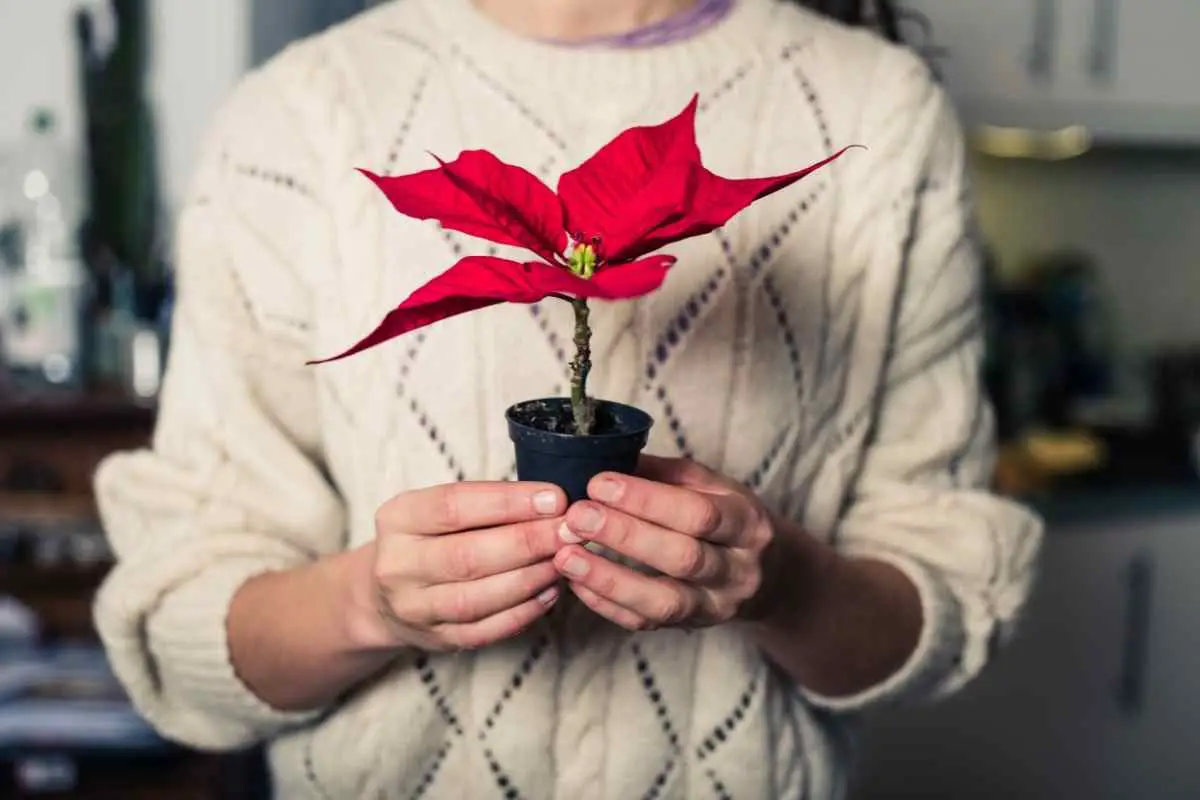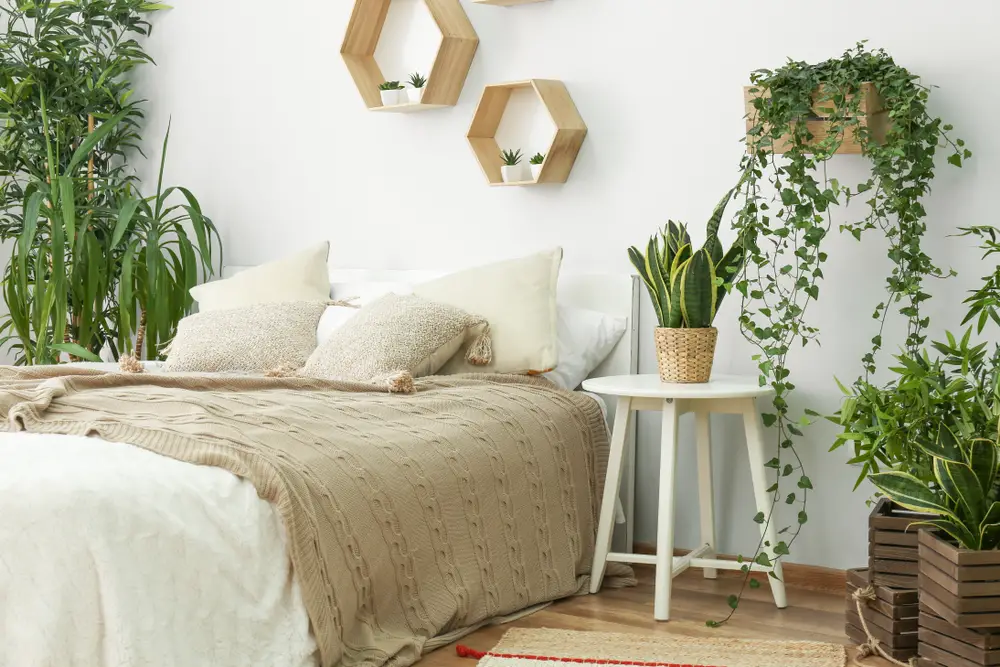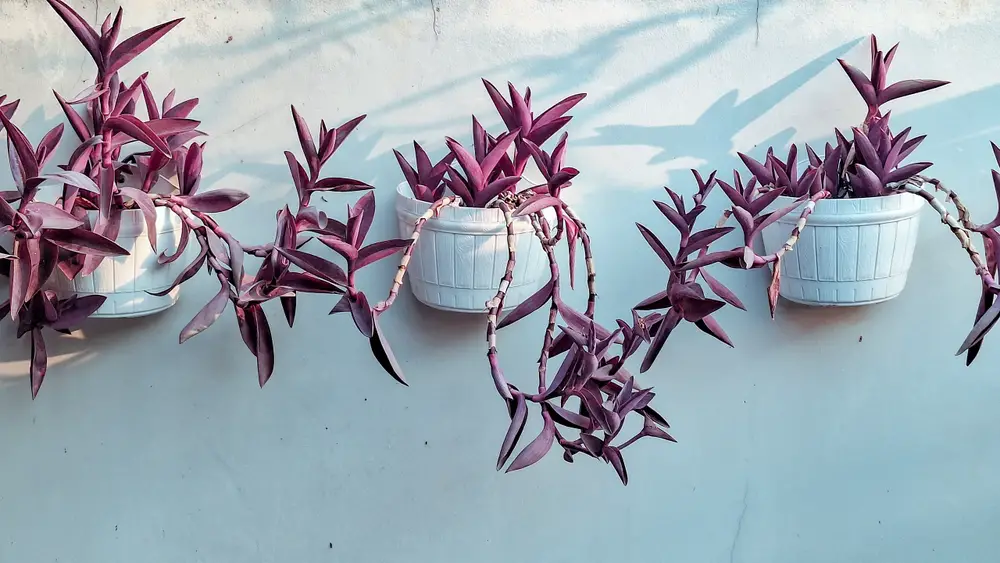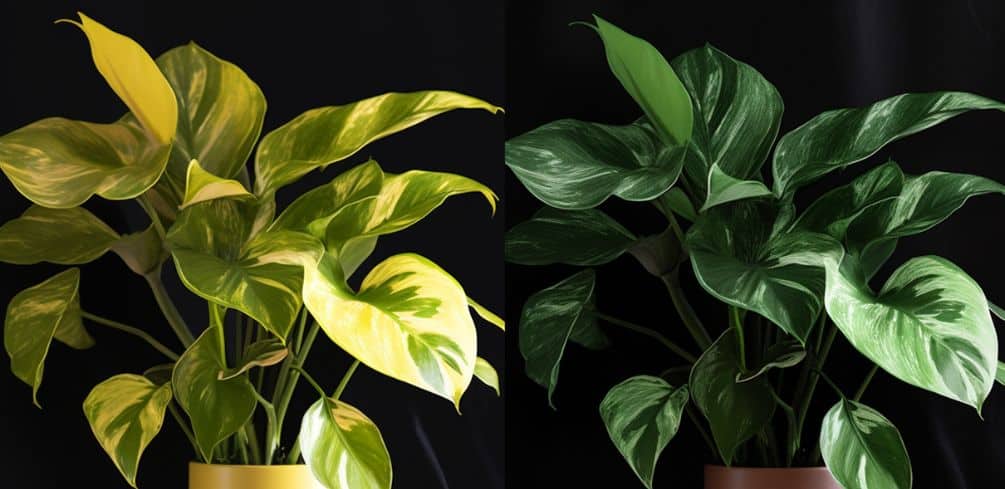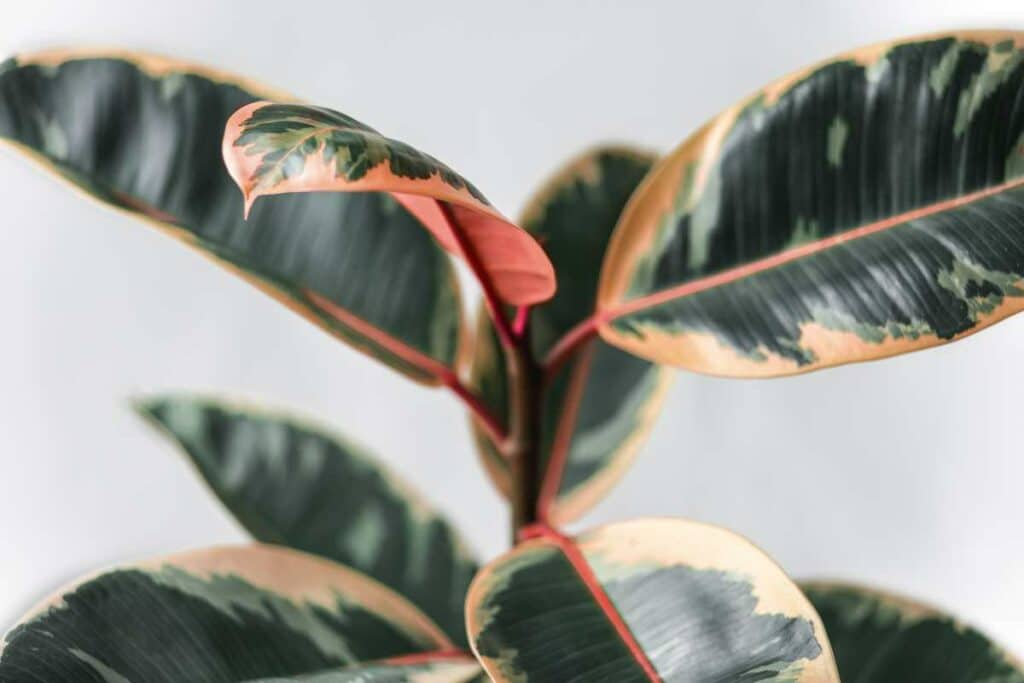Everyone has their own preference when it comes to the design or decor in their home, and this can include the color of their plants.
If you are someone who would rather have an array of red plants in their home over any other color, then this article is for you.
There are a plethora of indoor plants with red flowers, with some of the most popular being Poinsettias, Hibiscus, Wax Begonia, and the Thanksgiving Cactus.
In this article, we will list 20 of the most popular, red-flowered plants, along with information regarding each one and a little fun fact that you probably never knew.
If you are in the market for a great indoor plant that sports the color red, check out our list below.
1. Poinsettias (Euphorbia pulcherrima)
Poinsettias are a common house plant displayed during the holidays, mainly due to their beautiful red flowers and green leaves.
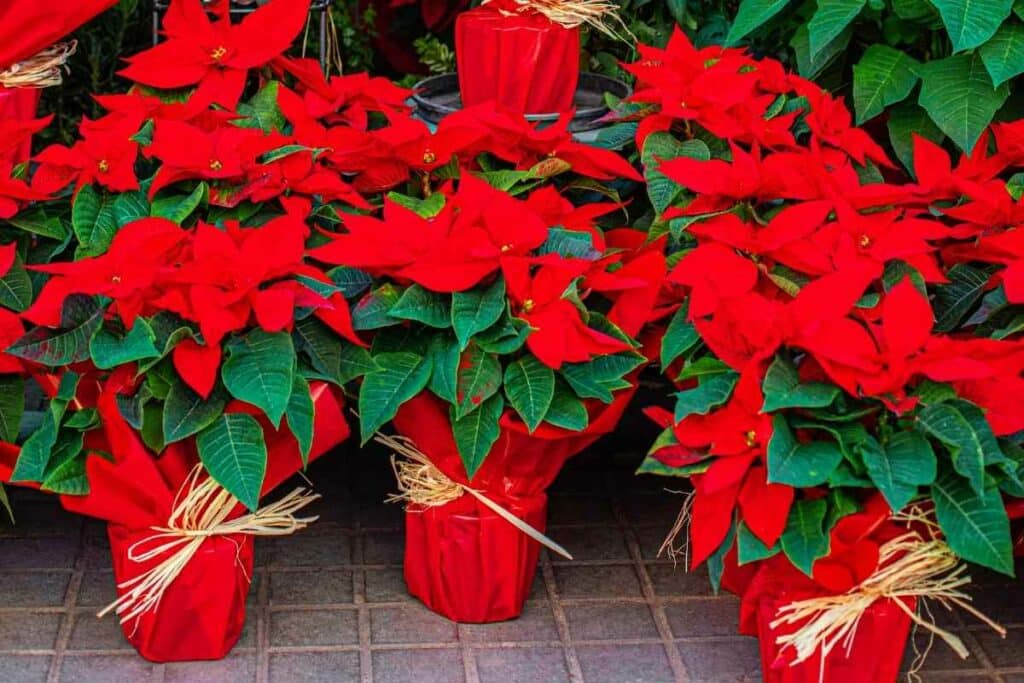
These plants originated in the wild from Mexico to Southern Guatemala and were known as “The Mexican Flame Flower” before it took the name Poinsettias.
Interesting Fact: It is a common belief that Poinsettias are poisonous; however, this is untrue, and the flower does not pose very much of a threat to children or pets).
2. Bromeliads (Guzmania bromeliads)
Bromeliads are a great plant for sprucing up your space, whether in the bathroom or on your desk at work.
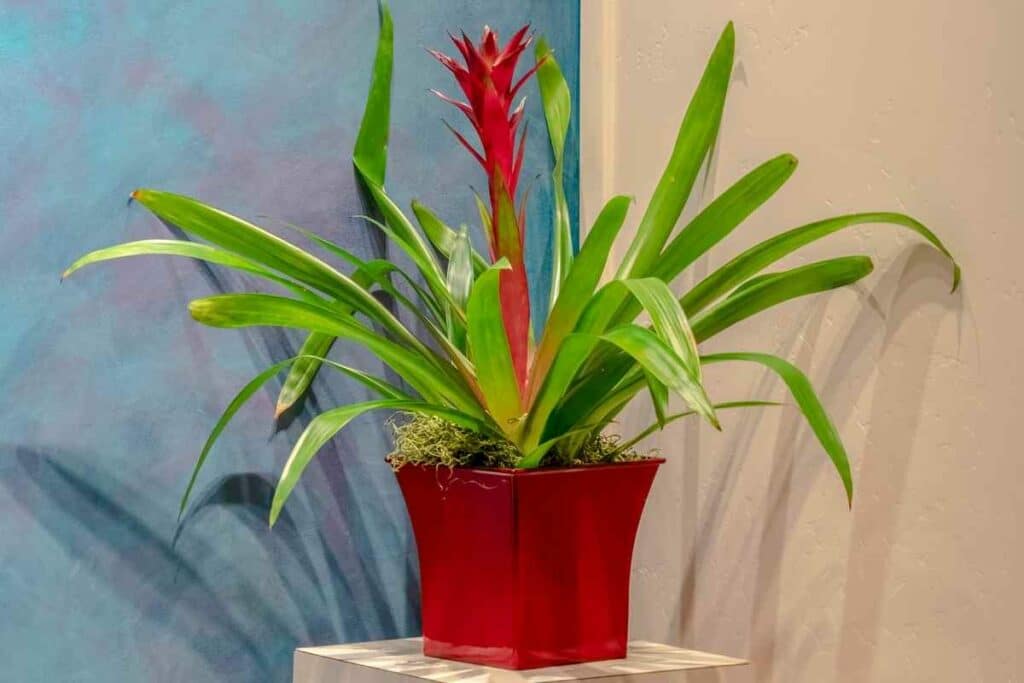
These plants range in size, shapes, and colors (Including different shades of red), usually showcasing shorter-length stems consisting of rosettes of stiff and spiny leaves.
There are as many as 3590 known species of this plant native to the tropical Americas.
3. Thanksgiving Cactus (Schlumbergera truncata)
The Thanksgiving Cactus (often sold as a “Christmas Cactus”), is a topical succulent with beautiful red flowers atop flat stems that support claw-like appendages.
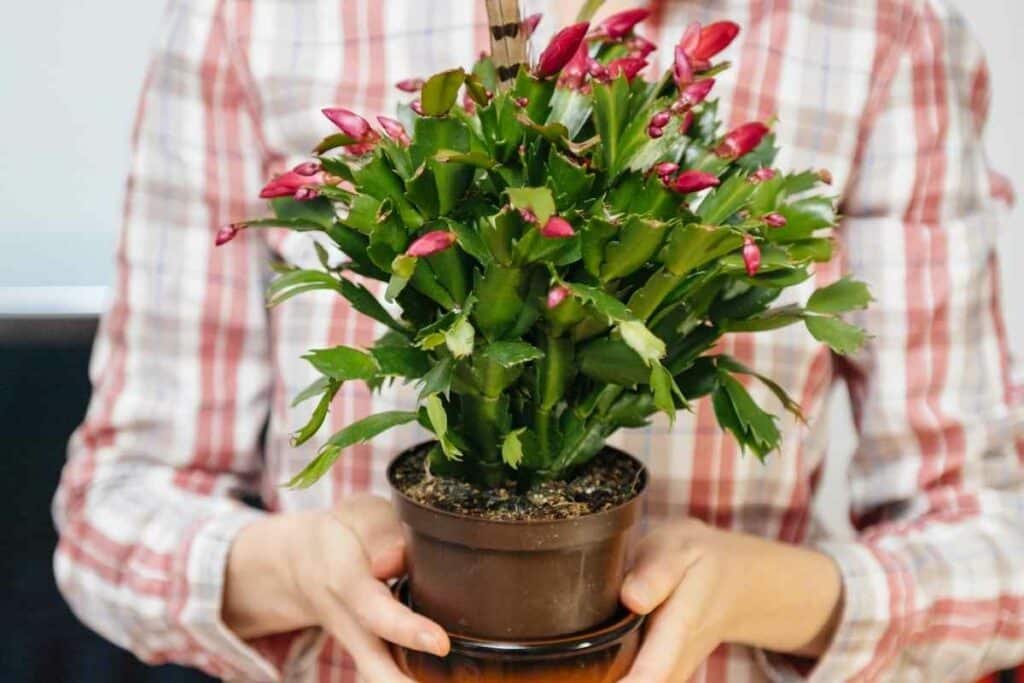
This plant grows in the wintertime, with its flowers blooming right around November, just in time for Thanksgiving.
Although this plant is a “cactus”, it does not thrive well in hot, humid air.
4. Chenille Plant (Acalypha hispida)
With a nickname like “red hot cattail”, you can already begin to picture how simply fabulous this house plant really is.
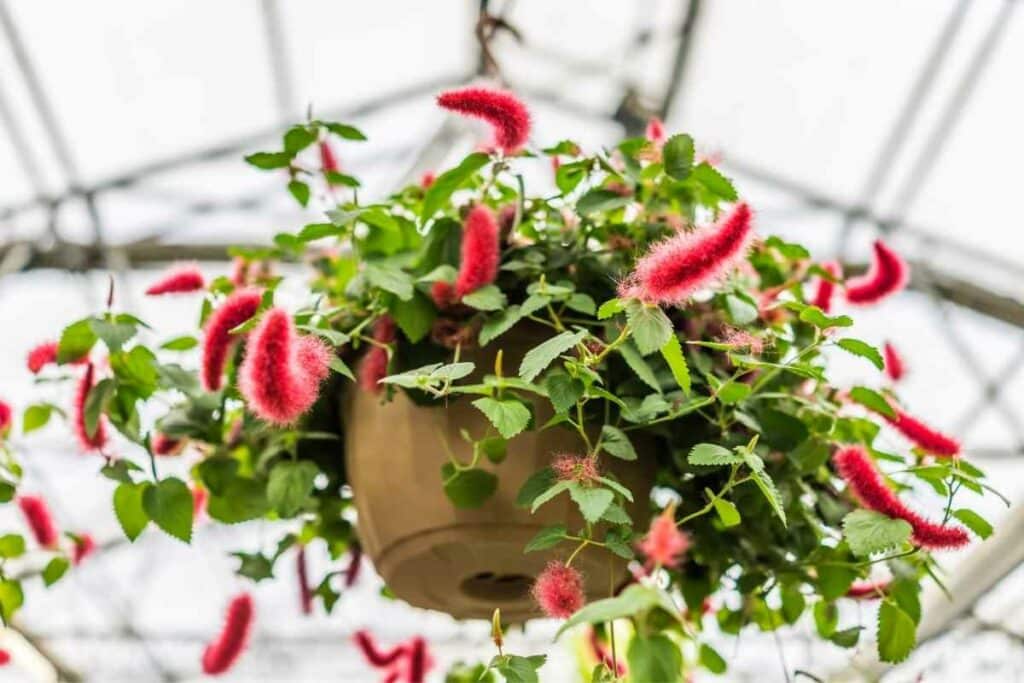
The Chenille Plant originates on the islands of Hawaii and consists of long-hanging, fuzzy, bright red flowers.
This house plant is actually a flowering shrub and can grow up to eight feet tall.
5. Amaryllis (Hippeastrum Species)
The Amaryllis is a flashy indoor plant that has large, broad, red flowers and evergreen leaves.
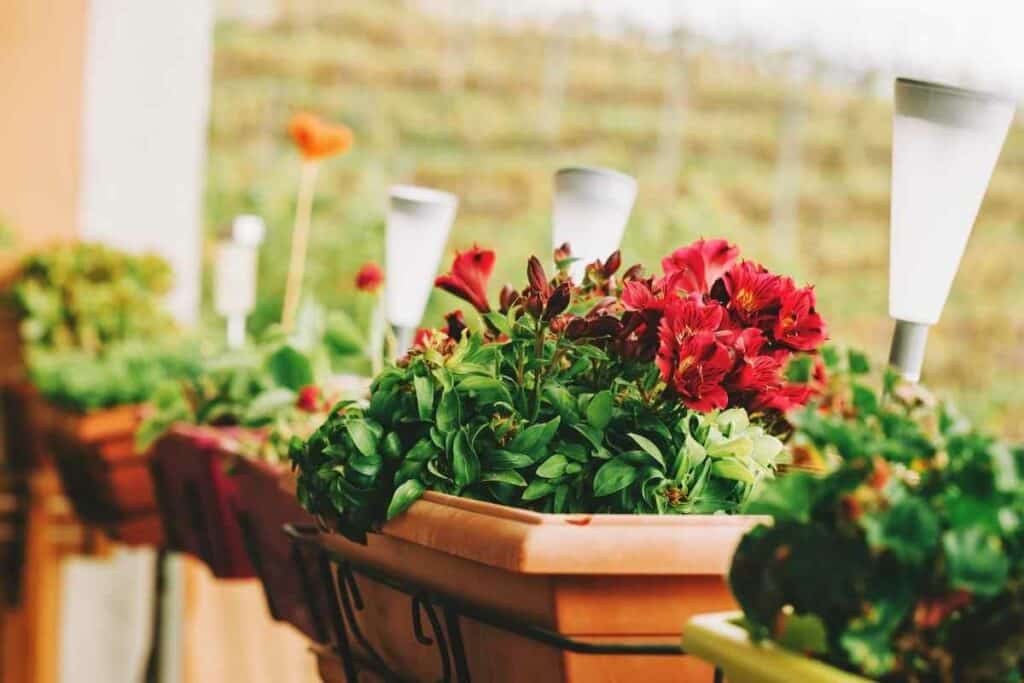
It is a South American native and has a large variety of hybrid flowers that derive from it.
These plants are very often given as gifts around the holiday season.
Good to Know: Birds, butterflies, and bees are very attracted to this plant.
6. Flame of the Woods (Ixora coccinea)
The “flame of the woods,” also known as the “jungle geranium”, is native to India and Southeast Asia.
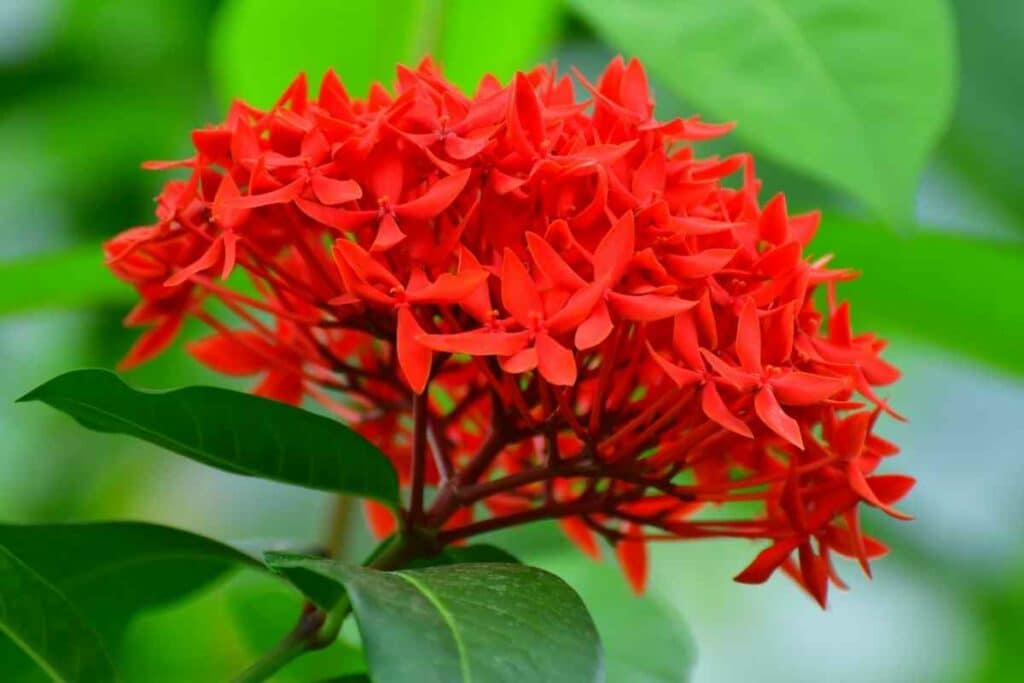
This plant has flowers that grow four red petals and are prominent and bushy.
It is drought-resistant, and although they prefer the sunny outdoors, they are frequently brought inside during the winter months.
Did you know these tiny red flowers each produce two to three seeds or berries that are sweet and edible?
7. Flaming Katy (Kalanchoe blossfeldiana)
The “Flaming Katy” is a great household plant that is comprised of bright green and large shiny leaves, with small spurts of red flowers spotted all around it.
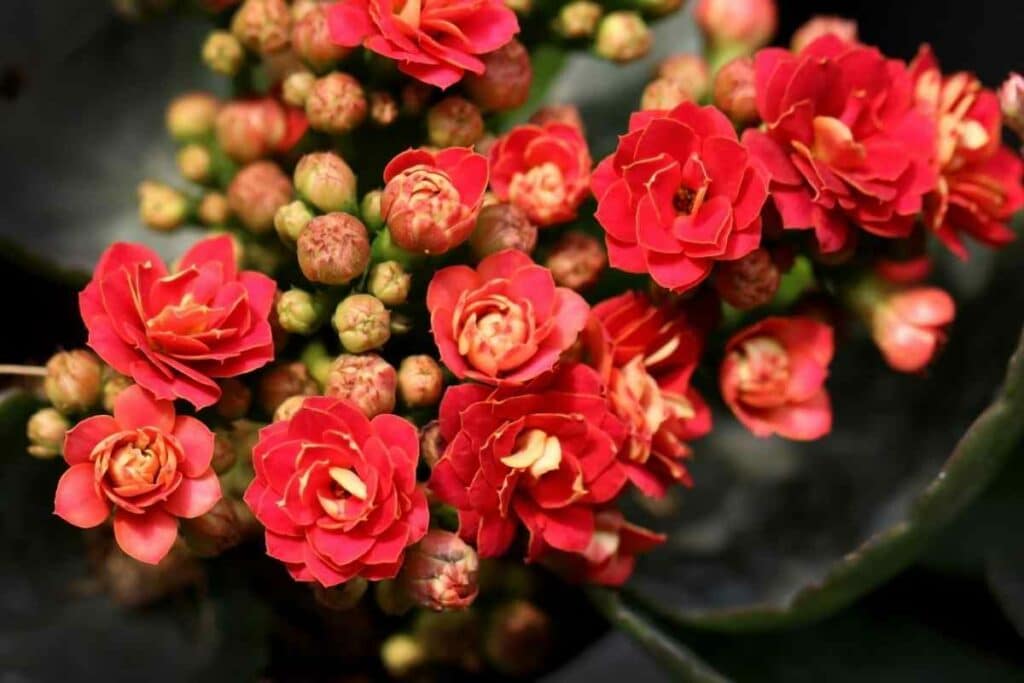
These plants can bring color and beauty to any space and usually grows during the spring and wintertime.
This plant tends to attract birds and butterflies everywhere it grows.
8. Flaming Sword (Vriesea splendens)
This plant got its name due to the single long red flower that grows on top of a sturdy green stem with distinct giant leaves.
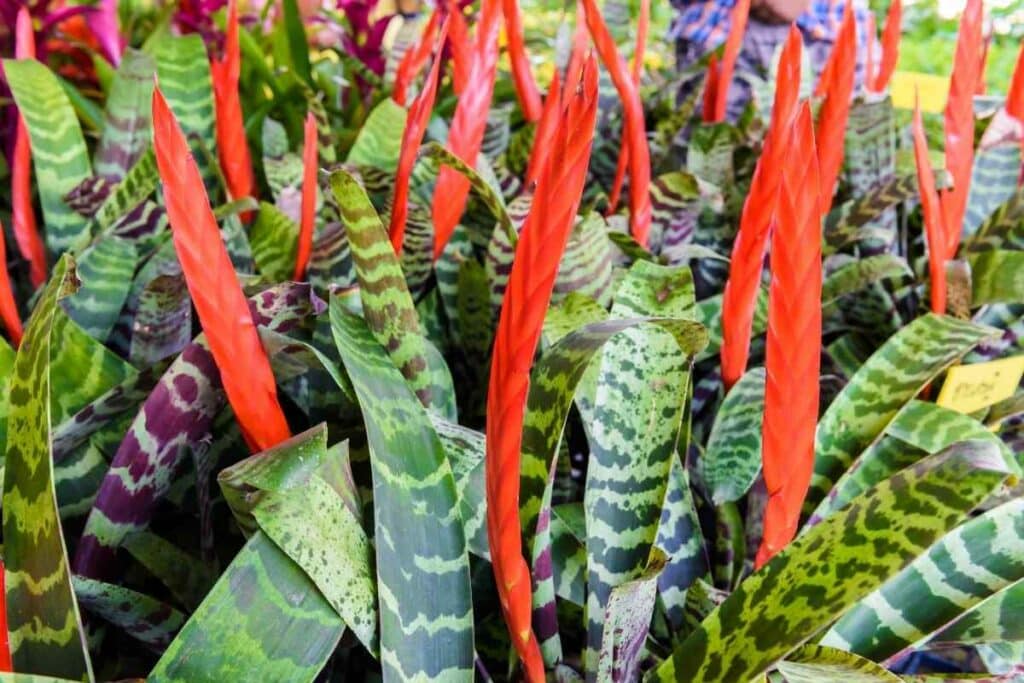
This sword-like flower can grow up to two feet tall and is a very attractive and popular house plant.
The red flowers that grow on the Flaming Sword take 3 years to bloom.
9. Flamingo Lily (Anthurium Andraeanum)
The “Flamingo Lily” is a large potted, heart-shaped flower known for its wax-like texture and bright red color.
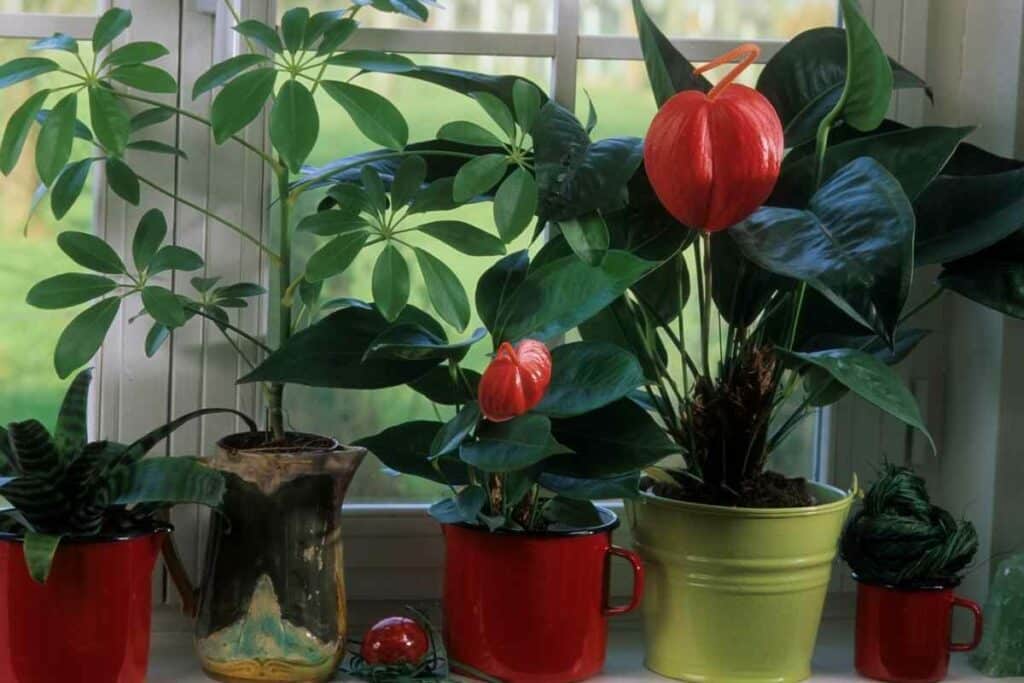
This flower originates in Colombia and Ecuador. Although it may be amazing to look at, the whole thing is toxic and can lead to difficulty swallowing and vomiting if ingested.
Flamingo Lily is noted by NASA in their clean air study to remove ammonia, formaldehyde, xylene, and toluene from the air.
10. Hibiscus (Hibiscus rosa-sinensis)
The Hibiscus plant has a trumpet-shaped flower with five large petals that can grow up to 18 cm wide.
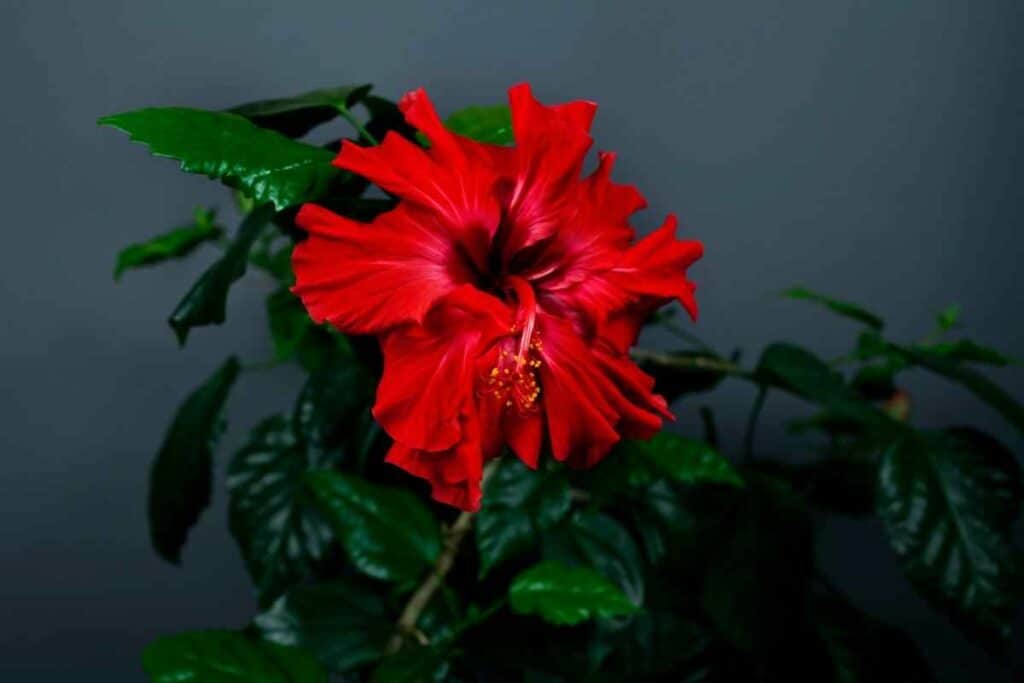
This tropical plant is a prominent house plant for many homes. However, its origin is a little hard to pin down; with a popular theory, it grows widely in parts of tropical Asia.
The Hibiscus flowers are edible often used in salads in the Pacific Islands.
Few People Know: The Hibiscus plant is often used in Chinese herbology for its believed medical benefits and has been shown to absorb ultraviolet radiation.
11. African Violets (Saintpaulia ionantha)
Although many African Violets are mainly light or dark purple colors, they have a variety of reds.

The leaves are large and hairy, whilst the flower petals are heart-shaped and resemble a violet, even though there is no relation.
These house plants come from Tanzania, Eastern Africa, and the indoor versions grow to be around 3 feet tall.
The African violet has become accustomed to indoor life and is no longer found in the wild all that often.
12. Crown of Thorns Plant (Euphorbia milii)
The Crown of Thorns will bring a touch of Madagascar to your home, as this desert succulent represents the country well and its ambiance with their long green stems and small, yet beautiful, bright red flowers with green stems and blackthorns.
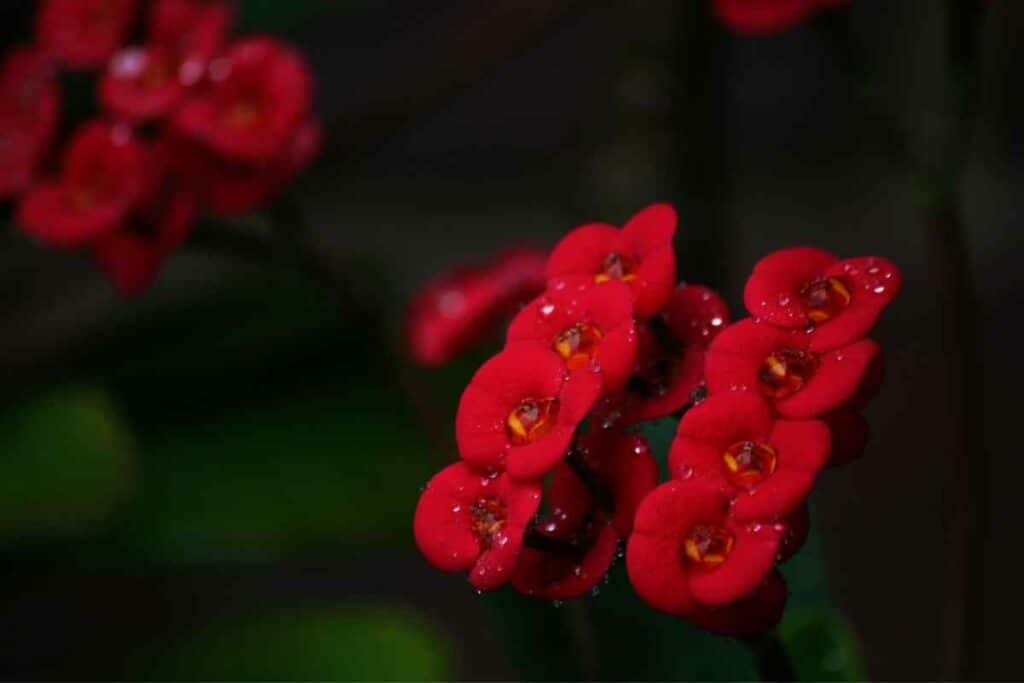
This plant is perfect for indoor pots because it doesn’t require much maintenance.
The Crown of Thorns is used to symbolize the crucifixion of Jesus and the “crown” he wore on his head.
13. Cyclamen (Cyclamen persicum)
Another red house plant that is known for sporting red heart-shaped flowers is the Cyclamen.
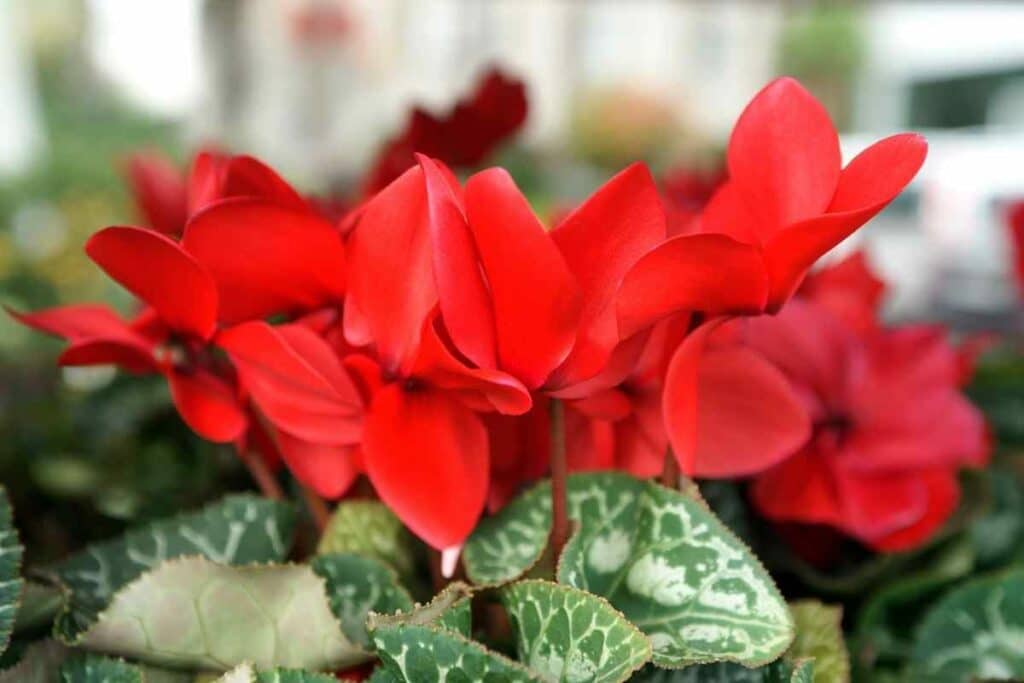
Although this plant comes in many colors, there are many versions that add a splash of crimson to the home.
Another benefit of this house plant is the sweet floral scent that lingers throughout the room.
Highly Toxic: This plant is extremely toxic, even if just chewed, especially the roots, and can cause serious health problems and even death. Keep away from children and pets.
14. Guzmania (Guzmania spp)
People who are sensitive to floral or perfume smells can safely keep this fragrant-free plant hanging in their homes.
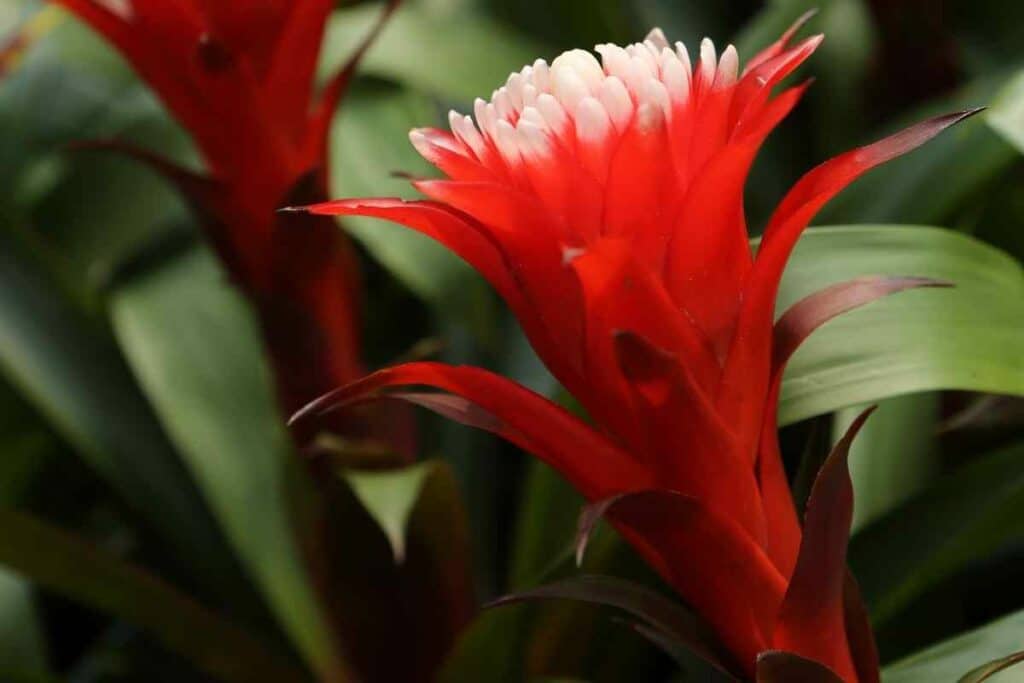
It is a member of the pineapple family and native to:
- Southern Mexico
- the West Indies
- and Florida
This tall beauty can reach up to 26 inches in height, making it the perfect centerpiece in any room.
Guzmania plant has been recognized for removing air pollutants like formaldehyde and benzene from a room, great for those who smoke inside.
15. Lipstick Plant (Aeschynanthus radicans)
The lipstick plant sprouts vibrant red, tube-shaped flowers that cascade from their pot accompanied by glossy green foliage, making it a beautiful arrangement to hang in your room.
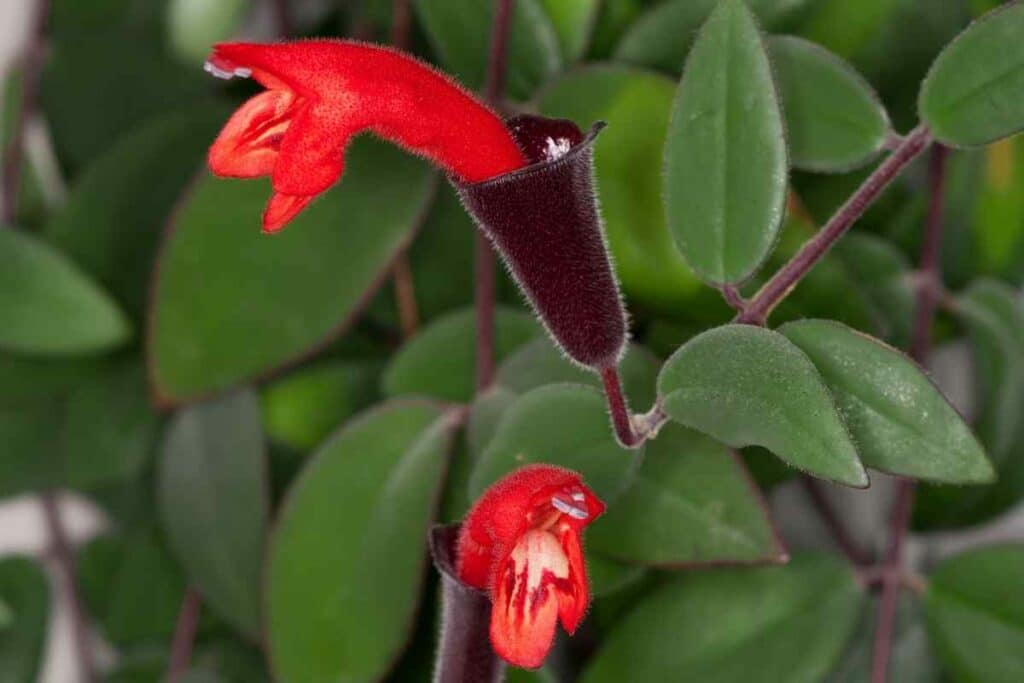
This plant originates in the tropics of the Malay Peninsula and grows up to 3 feet long, viney stems, thriving indoors easily.
The lipstick plant is one of 400 varieties of exotic angel plants.
16. Nivosa Cactus (Parodia nivosa)
The Nivosa Cactus, also known as the woolly nipple cactus, is a popular house plant that comes from the Caribbean.
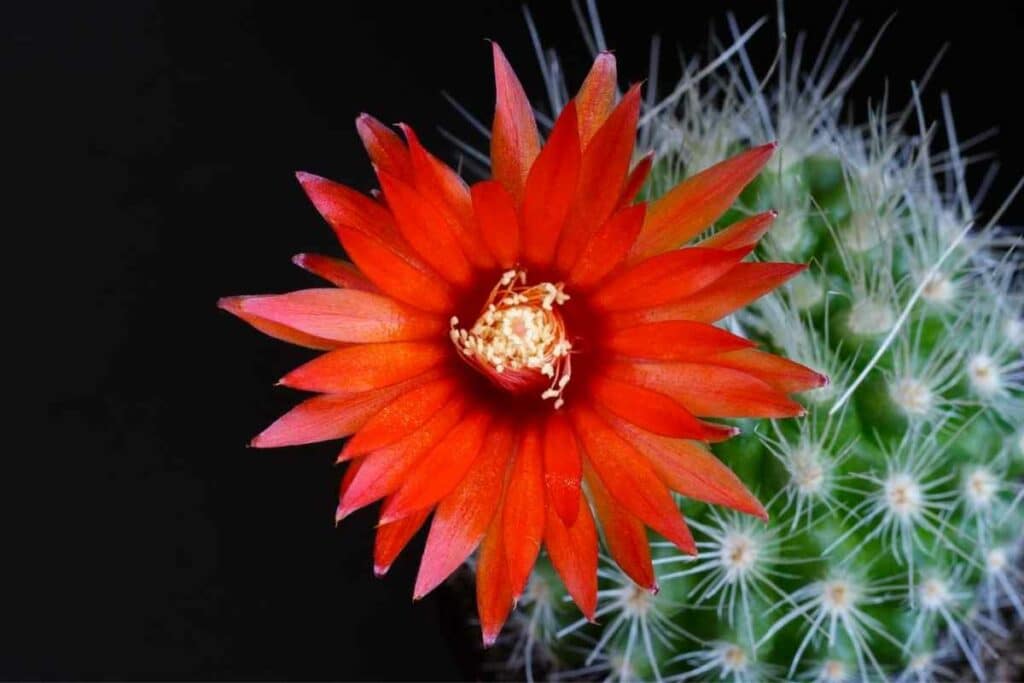
This colorful cactus species blooms in the spring and grows up to 9 inches tall. The 1.5-inch spikes often cross each other as means to protect themselves.
Through these long white spines protrude incredible red flowers bringing beauty with them.
Nivosa Cactus does not have any leaves; instead, they are accompanied by pointy sharp spines.
17. Phalaenopsis Orchids (Phalaenopsis spp.)
The Phalaenopsis Orchid, aka moth orchid, is the most popular form of orchid sold today.
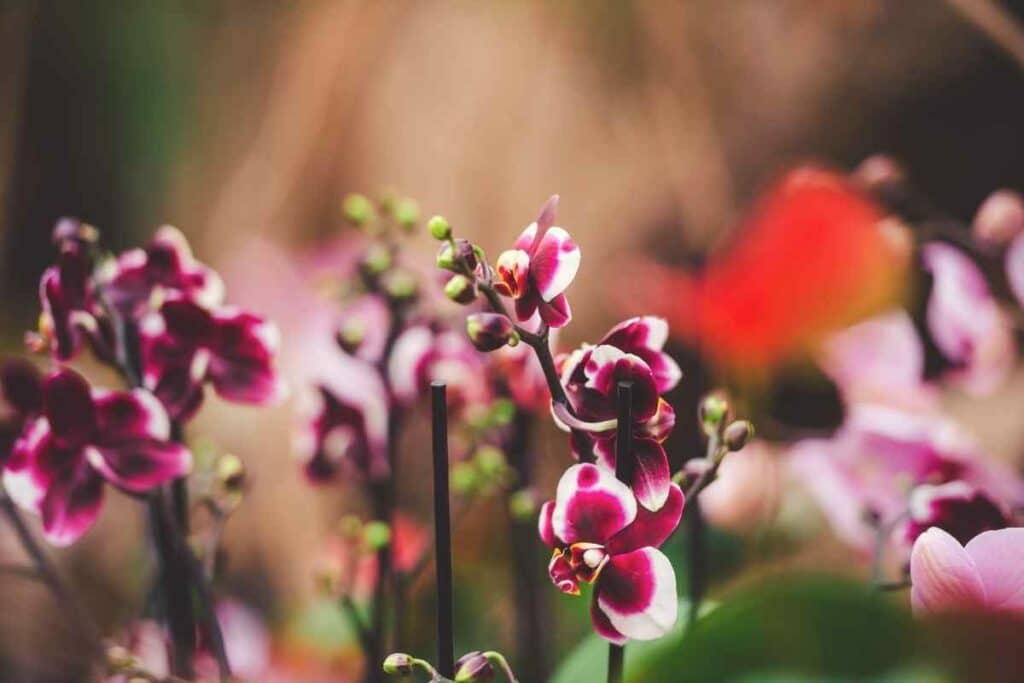
This is mainly due to the vibrant red colors, year-round blooming, and ease of care.
This potted plant is a simple yet elegant decor for just about any style, and this orchid is the perfect starter plant for a new collector.
Phalaenopsis orchids are still used today as a form of Chinese medicine, most commonly in the form of teas.
18. Sky Plant (Tillandsia ionantha)
This plant species is native to the Americas and is not reliant on root support from the soil.
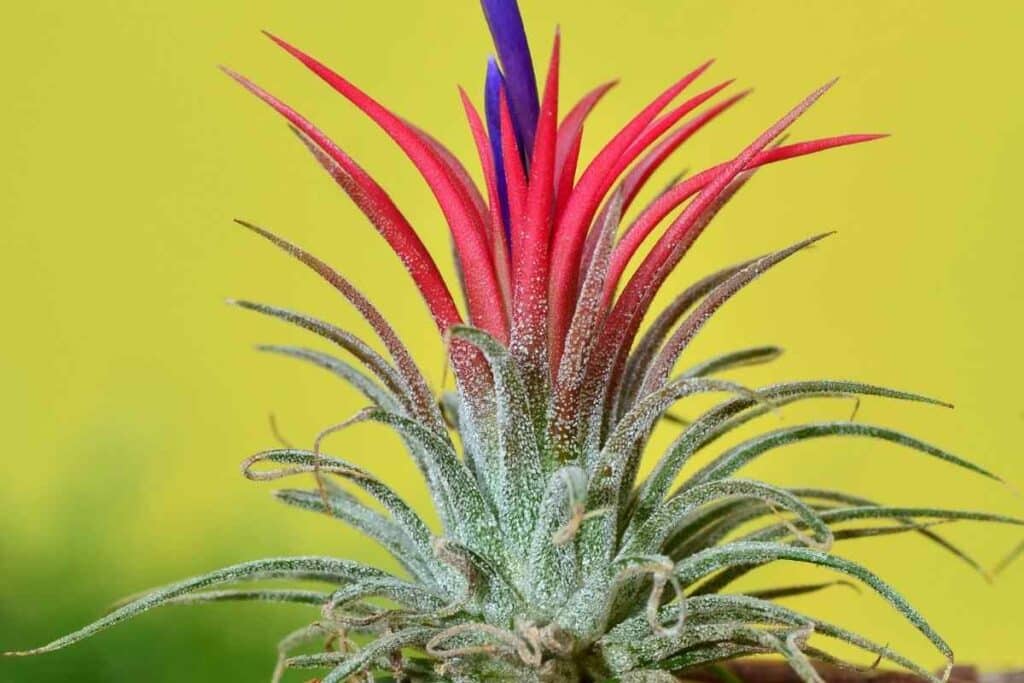
It is often seen growing on trees and is one of the most popular air plant species for indoor decoration.
There are many sky plant species; some can be fuzzy and pink, while others can flaunt spiky red flowers.
In the Wild: These plants absorb the nutrients they need by feeding on rainwater and bird poop while clinging to trees.
19. Wax Begonia (Begonia x semperflorens-cultorum)
Wax Begonias are some of the most popular plants that fill outdoor gardens throughout the summer and fall months.

They are also some of the most attractive indoor plants as well, providing your home with bright red, luscious, bushy, and lightly clustered flowers.
They get their name due to the shiny wax textured foliage that grows around the plant.
Wax Begonias have a slightly sweet-sour taste similar to a lemon and are rich in vitamin C. They are okay for consumption in moderation.
20. Fittonia (Fittonia albivenis)
Fittonias are low-growing creeper plants that are fairly easy to care for and maintain.
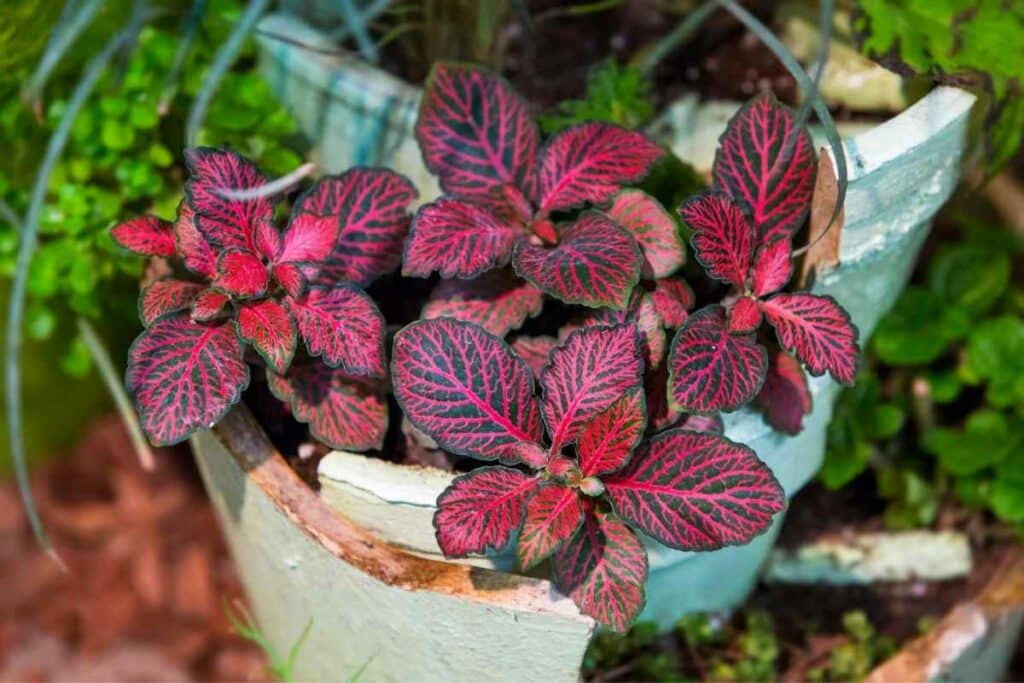
This house plant is an evergreen plant that is decorated with green and red foliage and makes a great terrarium, basket, and hanging plant.
Many owners of the Fittonia will match this plant with other flowers in a moss-layered garden.
Your Fittonia will tell you when it needs to be watered by going limp until it gets a refreshing drink.
Why Are Indoor Plants So Popular?
There are many reasons people are so quick to head to the nearest nurseries these days.
From the way indoor plants look to the benefits they have; homeowners are relishing this popular form of decor.
Besides giving a boring area a nice boost of color, indoor plants provide a plethora of advantages:
- First and foremost, nature is known for enhancing your mood, so simply adding a few plants around the house or in your office will make you feel happier and calmer.
- Another great reason to bring a potted plant to your space is due to the fresh aroma they tend to share. While there are plenty of non-scented indoor flowers, many of them smell amazing.
- Studies have shown that many flowers are great for purifying the air, removing toxins that can be harmful to your health.
- Another toxin these plants can take care of is noise pollution. That’s right, did you know that plants refract sound? Adding a few pots to your workspace can help keep things quiet and peaceful.
- Finally, house plants are becoming more popular because they are so easy to maintain and need little to thrive. Simply watering your indoor pots and making sure they see the sun from time to time is about all the care they need to survive throughout the season and even for years.
Where Can You Purchase Red House Plants?
Because indoor plants are becoming such a staple in many people’s homes, they are not very hard to find.
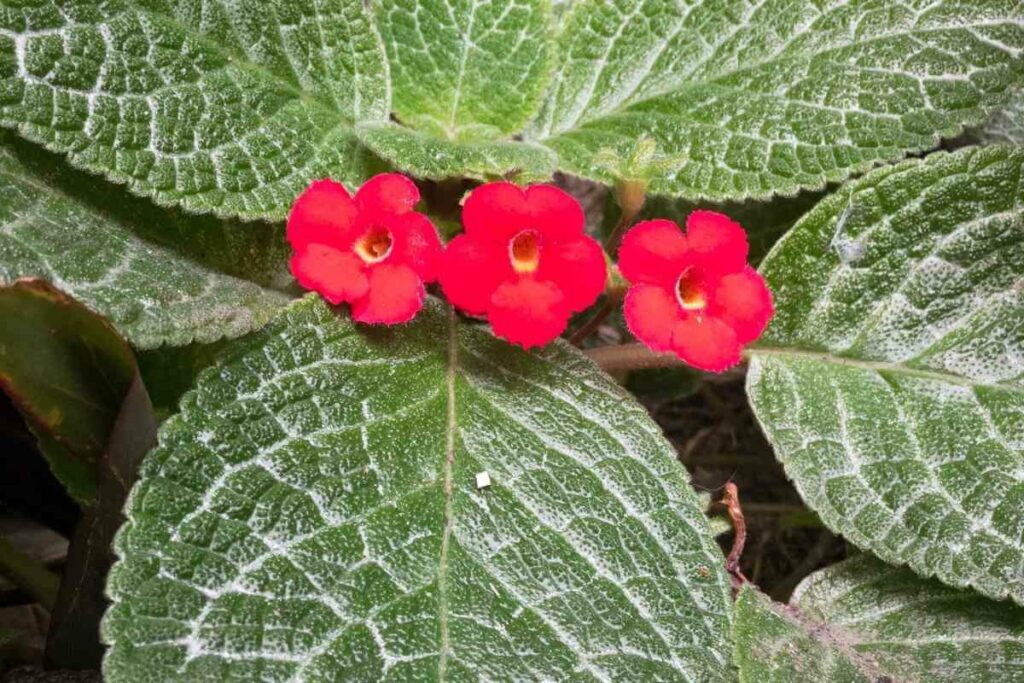
Here is a list of places that carry a variety of house plants, online and in-stores:
- Walmart
- Home Depot
- Wayfair
- 1800Flowers
- Lowes
- Amazon
- Etsy
- ProFlowers
You can also visit your local nursery during the spring and summer months to purchase in-season local plants.
Summing Things Up
Red is the color of fire, passion, and love.
It is an exciting and intense color that amps up energy and action. Bringing red indoor plants into any space is going to make you feel happy, energized, and alive.
There are many red-flowered plants to choose from, whether you want a small cactus to stick on your desk or a large creeping vine that produces dramatic petals and thorns, there is something for you.
Might Like This
- Philodendron Care, Varieties, And Aesthetic Home Arrangements
- Best House Plants for Low Light – Thriving Indoors with Minimal Sunlight
- 15 Air-Purifying Houseplants That Release The Most Oxygen
- Purple Houseplants: Your Guide to Dramatic Indoor Beauty
- Philodendron Moonlight Vs. Golden Goddess
- How to Revive Your Rubber Plant: 6 Tips to Help Your Rubber Tree Thrive Again
